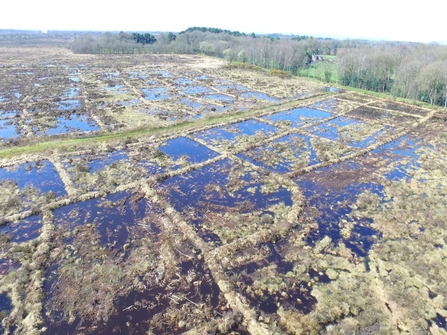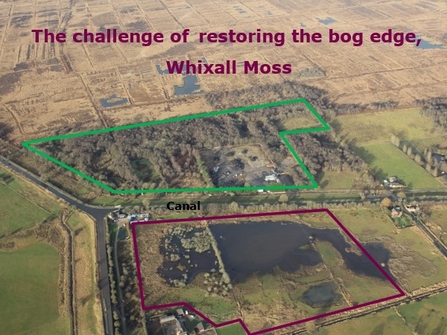The Marches Mosses BogLIFE Project is restoring one of Britain’s largest lowland raised bogs at Fenn’s, Whixall & Bettisfield Mosses National Nature Reserve (NNR) and Wem Moss NNR near Whitchurch. This crucial restoration work will increase the ability of these wonderful bogs and peatlands to absorb CO2 and help to tackle the climate emergency and biodiversity crisis.
Fenn’s, Whixall, and Wem Mosses NNR on the Shropshire/Wrexham border is a superb demonstration of nature recovering. Severely damaged by drainage, afforestation and peat cutting, the restoration works over the past 30 years has restored 775 ha out of the overall area of 950 ha. Healthy peat locks carbon in, holding more carbon, acre for acre, than woodland. Restoration creates a greater depth of peat which stores even more carbon. Peat is 90% water, making the Mosses a natural protection against flooding – slowing the flow downstream.
The key is getting a properly functioning hydrological regime after previous efforts to drain the peatlands for peat extraction. If peat is allowed to dry out, or is cut for garden compost, the carbon is released into the atmosphere as CO2, thus adding to the climate crisis. Bog mosses and vegetation depend on high levels of water and over many years turn into peat that traps carbon making such peatlands a crucial store of carbon. The restoration of the raised bog and its peatlands has resulted in wildlife bouncing back including expanding populations of the rare white-faced darter dragonfly and large heath butterfly and the return of breeding snipe for the first time in 30 years.



